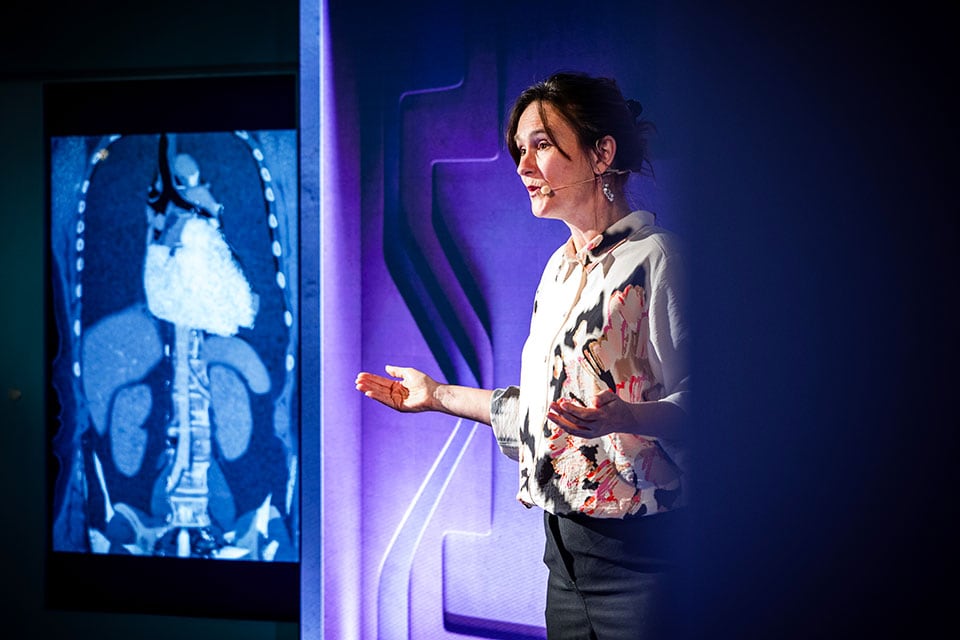"Many people know little about Artificial Intelligence or feel a sort of fear. This exhibition is our chance to lower the threshold and let people experience AI firsthand, unravel its mysteries, and embrace its possibilities," says Olga Coolen, director of the Philips Museum in Eindhoven, about the new brAInpower exhibition at the museum. "It is a subject that not only shapes the future but is also deeply rooted in our history."
Olga stands on the stage at the Philips Museum to officially open the brAInpower exhibition. In the audience are (former) Philips colleagues, representatives from the Brainport region, students from the TU in Eindhoven, AI professionals, and other enthusiasts of artificial intelligence. The exhibition seeks to answer the question, "What can AI mean for you?" and features an extensive timeline of AI's history, highlighting Philips' role.

Leadership Role
Her speech is a compilation of many highlights from Philips' rich history in computer and data storage technology. "For Philips, a company that has been a pioneer in technological innovation throughout its long history, this exhibition is a celebration of our past, our contributions, and our future," she says.
Crucial Moments
There have been several crucial moments when Philips played a role in the development of AI. As early as around 1960, Philips researchers at Natlab were experimenting with computers. They built the PETER (Philips Experimental Bilingual Electronic Calculator) and the PASCAL (Philips Awfully Fast Calculator). She talks about the development from transistor to chip, digital storage through the CD, and the construction of the first wafer steppers in 1981. Olga says, "These turned out to be very important building blocks for AI."


Olga spreekt tijdens de opening van expositie brAInpower over de impact van AI, en welke rol Philips speelde in de ontwikkeling ervan.
Lasting Impact
The museum director also reflects on the vision to place chip production in Philips Semiconductors (later NXP) in 1991 and to invest in companies like ASML and TSMC, which have been crucial for the production of advanced semiconductors essential for AI applications. "These strategic decisions have not only shaped the industry but have also had a lasting impact on global technological progress," she says.
New Course
The exhibition takes visitors through the rich history but is much more than just a celebration of the past and Philips' achievements, Olga emphasizes on stage. It is primarily the beginning of a new course for the Philips Museum. "We want to play an educational role in socially relevant debates. We want to make the museum the living room of the Brainport region, where knowledge and inspiration come together. Let's strive together for a future where technology not only brings progress but also promotes human well-being."
Want to know more about AI?
Visit the brAInpower exhibition at the Philips Museum or www.philips.nl/brainpower.

